
Amy Sillman is a New York-based visual artist, known for process-based paintings that move between abstraction and figuration, and engage nontraditional media including animation, zines and installation. Her work draws upon art historical tropes, particularly postwar American gestural painting, as both influences and foils; she engages feminist critiques of the discourses of mastery, genius and power in order to introduce qualities such as humor, awkwardness, self-deprecation, affect and doubt into her practice. Profiles in The New York Times, ARTnews, Frieze, and Interview, characterize Sillman as championing "the relevance of painting" and "a reinvigorated mode of abstraction reclaiming the potency of active brushwork and visible gestures." Critic Phyllis Tuchman described Sillman as "an inventive abstractionist" whose "messy, multivalent, lively" art "reframes long-held notions regarding the look and emotional character of abstraction."

Lilly Martin Spencer was one of the most popular and widely reproduced American female genre painters in the mid-nineteenth century. She primarily painted domestic scenes, paintings of women and children in a warm happy atmosphere, although over the course of her career she would also come to paint works of varying style and subject matter, including the portraits of famous individuals such as suffragist Elizabeth Cady Stanton. Although she did have an audience for her work, Spencer had difficulties earning a living as a professional painter and faced financial trouble for much of her adult life.
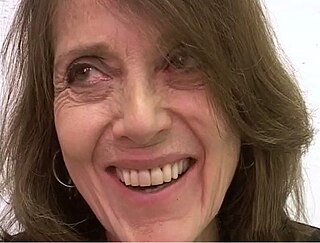
Pat Lipsky is an American painter associated with Lyrical Abstraction and Color Field Painting.
Cora Cohen was an American artist whose works include paintings, drawings, photographs, and altered x rays. Cohen is most known for her abstract paintings and is often identified as continuing the tradition of American Abstraction. In a 2023 review in Artforum Barry Schwabsky suggested that "Cohen’s determination to evade stylistic consistency has made her one of the most underrated painters in New York." The New York Times' critic Michael Brenson wrote of her 1984 exhibition, Portraits of Women: "The works are dense, brooding and yet elated. The turbulence of the paint not only looks but also feels like freedom." Cohen interviewed many other artists also associated with continuing the tradition of American Abstraction for Bomb Magazine including; Ralph Humphrey, Dona Nelson, Craig Fisher, Carl Ostendarp, and Joan Mitchell. Her work has also been identified with traditions of European abstraction, and specifically German abstraction, including the work of Wols, Sigmar Polke, Gerhard Richter. She began exhibiting in Germany in the early nineties and continued to show at some of its most prestigious institutions.

Katherine Bradford, née Houston, is an American artist based in New York City, known for figurative paintings, particularly of swimmers, that critics describe as simultaneously representational, abstract and metaphorical. She began her art career relatively late and has received her widest recognition in her seventies. Critic John Yau characterizes her work as independent of canon or genre dictates, open-ended in terms of process, and quirky in its humor and interior logic.
Carrie Moyer is an American painter and writer living in Brooklyn, New York. Moyer's paintings and public art projects have been exhibited both in the US and Europe since the early 1990s, and she is best known for her 17-year agitprop project, Dyke Action Machine! with photographer Sue Schaffner. Moyer's work has been shown at the Whitney Biennial, the Museum of Arts and Design, and the Tang Museum, and is held in the permanent collections of the Metropolitan Museum of Art. She serves as the director of the graduate MFA program at Hunter College, and has contributed writing to anthologies and publications like The Brooklyn Rail and Artforum.

Alice Trumbull Mason (1904–1971) was an American artist, writer, and a founding member of the American Abstract Artists group (AAA) in New York City. Mason was recognized as a pioneer of American Abstraction.

Joan Semmel is an American feminist painter, professor, and writer. She is best known for her large scale realistic nude self portraits as seen from her perspective looking down.

Ulrike Müller is a contemporary visual artist. Müller is a member of the New York-based feminist genderqueer group LTTR as well as an editor of its eponymous journal. She also represented Austria at the Cairo Biennale in 2011. She is currently a professor and co-chair of Painting at the Milton Avery Graduate School of the Arts at Bard College in Annandale-on-Hudson, New York.

Agnes Weinrich was an American visual artist. In the early twentieth century, she played a critical role in introducing cubist theory to American artists, collectors, and the general public and became one of the first American abstractionists. A life-long proponent of modernist art, she was an active participant in the art communities of Provincetown and New York. Early in her career, she traveled widely in Europe and spent extended periods studying in Paris and Berlin. She also studied art in Chicago, Provincetown, and New York. During most of her career, she worked in a Provincetown studio during the warm months and a Manhattan studio during the cold ones. Weinrich's easel work included oil paintings, watercolors, and pastels. She also made block prints and etchings and drew using pencil and crayon. Her paintings, prints, and drawings appeared in solo and group exhibitions throughout her career and she received favorable critical attention both during her life and after her death.

Candida Alvarez is an American artist and professor, known for her paintings and drawings.
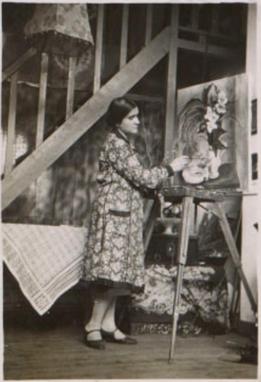
Lena Gurr (1897–1992), was an American artist who made paintings, prints, and drawings showing, as one critic said, "the joys and sorrows of everyday life." Another critic noted that her still lifes, city scenes, and depictions of vacation locales were imbued with "quiet humor," while her portrayal of slum-dwellers and the victims of warfare revealed a "ready sympathy" for victims of social injustice at home and of warfare abroad. During the course of her career Gurr's compositions retained emotional content as they evolved from a naturalistic to a semi-abstract cubist style. Discussing this trend, she once told an interviewer that as her work tended toward increasing abstraction she believed it nonetheless "must have some kind of human depth to it." Born into a Russian-Jewish immigrant family, she was the wife of Joseph Biel, also Russian-Jewish and an artist of similar genre and sensibility.
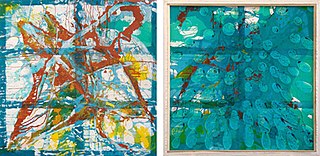
Dona Nelson is an American painter, best known for immersive, gestural, primarily abstract works employing unorthodox materials, processes and formats to disrupt conventional notions of painting and viewership. A 2014 New Yorker review observed, "Nelson gives notice that she will do anything, short of burning down her house to bully painting into freshly spluttering eloquence." Since 2002, long before it became a more common practice, Nelson has produced free-standing, double-sided paintings that create a more complex, conscious viewing experience. According to New York Times critic Roberta Smith, Nelson has dodged the burden of a "superficially consistent style," sustained by "an adventuresome emphasis on materials" and an athletic approach to process that builds on the work of Jackson Pollock. Writers in Art in America and Artforum credit her experimentation with influencing a younger generation of painters exploring unconventional techniques with renewed interest. Discussing one of Nelson's visceral, process-driven works, curator Klaus Kertess wrote, the paint-soaked "muslin is at once the tool, the medium, and the made."
Nina Chanel Abney is an American artist, based in New York. She was born in Harvey, Illinois. She is an African American contemporary artist and painter who explores race, gender, pop culture, homophobia, and politics in her work.

Jane Gibson Piper (1916–1991) was an American artist known for her abstract treatment of still lifes. Building on the French modernist tradition of Matisse and Cézanne, she gave color precedence over representation. Shortly after her death a critic said "throughout her career Piper worked within a relatively narrow aesthetic range. She was interested in spatial organization and in creating space through color — concerns of another painter she admired, Henri Matisse. There's a sense of Matisse in her later work, but no indication that she was trying to imitate him; the resonance reflects shared concerns." From her first exhibition in 1943 through the end of her life she was given a total of thirty-four solo exhibitions in Philadelphia, New York, and other East Coast galleries and her works have been collected by major museums including the Philadelphia Museum of Art, the Pennsylvania Academy of the Fine Arts, the Brooklyn Museum, the National Academy of Design, The Phillips Collection, and the Carnegie Museum of Art.
Lucy L'Engle (1889–1978) was an American painter who had an abstract style that ranged from Cubist to representational to purely abstract. Critics appreciated the discipline she showed in constructing a solid base on which these stylistic phases evolved. As one of them, Helen Appleton Read of the Brooklyn Daily Eagle, said in 1932, she was "at heart a painter with a painter's sensuous enjoyment of the medium itself." L'Engle herself at one time described her art as "a play of form and color" and at another said, "My pictures represent my feelings about experiences. They are experiments in modern art." Over the course of a long career she used studios in both Manhattan and Provincetown and exhibited in both commercial galleries and the annual shows held by two membership organizations, the New York Society of Women Artists and the Provincetown Art Association.
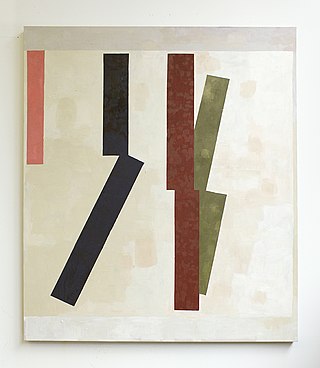
Sharon Butler is an American artist and arts writer. She is known for teasing out ideas about contemporary abstraction in her art and writing, particularly a style she called "new casualism" in a 2011 essay. Butler uses process as metaphor and has said in artist's talks that she is keenly interested in creating paintings as documentation of her life. In a 2014 review in the Washington Post, art critic Michael Sullivan wrote that Butler "creates sketchy, thinly painted washes that hover between representation and abstraction.Though boasting such mechanistic titles as 'Tower Vents' and 'Turbine Study,' Butler’s dreamlike renderings, which use tape to only suggest the roughest outlines of architectural forms, feel like bittersweet homages to urban decay." Critic Thomas Micchelli proposed that Butler's work shares "Rauschenberg’s dissolution of the barriers between painting and sculpture," particularly where the canvases are "stapled almost willy-nilly to the front of the stretcher bars, which are visible along the edges of some of the works."
Sally Michel Avery was an artist and illustrator who created modernist paintings of abstracted figures, landscapes, and genre scenes capturing personal moments of every day life. She was the co-creator of the "Avery style", wife and collaborator of artist Milton Avery, and mother of artist March Avery. Throughout their lives, Michel and Avery shared their studio space together, painting side by side, critiquing each other's work, and developing a shared style which includes the use of abstracted subjects, expressionistic color fields, and harmonious but unusual colors juxtapositions. Michel's work is the collections of the Metropolitan Museum of Art, the National Gallery of Art, the Pennsylvania Academy of Fine Arts, the Wadsworth Atheneum, and the Israel Museum, among others.
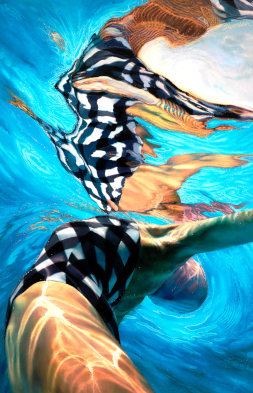
Lorraine Shemesh is an American artist whose practice focuses on painting, drawing, and ceramics. Since the early 1990s, she has created investigations of the human form that balance contemporary realism with an abstract expressionist concern for gesture, rhythm and pattern. Her best-known series depict active swimmers in pools viewed from above and underwater or intertwined, costumed dancers set in ambiguous, compressed spaces. In the 2000s, her work has increasingly moved towards abstraction, with figures dissolving into faithfully rendered optical phenomena or geometric patterning. Describing these qualities, Art in America critic Jonathan Goodman wrote, "being true to nature enables Shemesh to record a dazzling array of painterly gestures, some of them squarely within the tradition of Abstract Expressionism … Her use of abstract effects in the service of representation is striking and makes her art complex."
Sharon Sprung is an American painter based in Brooklyn, New York. She is primarily known for her portrait paintings such as Congressional portraits of Jeannette Rankin and Patsy Mink, as well as former First Lady Michele Obama's official White House portrait. She is an instructor at the Art Students League of New York.













